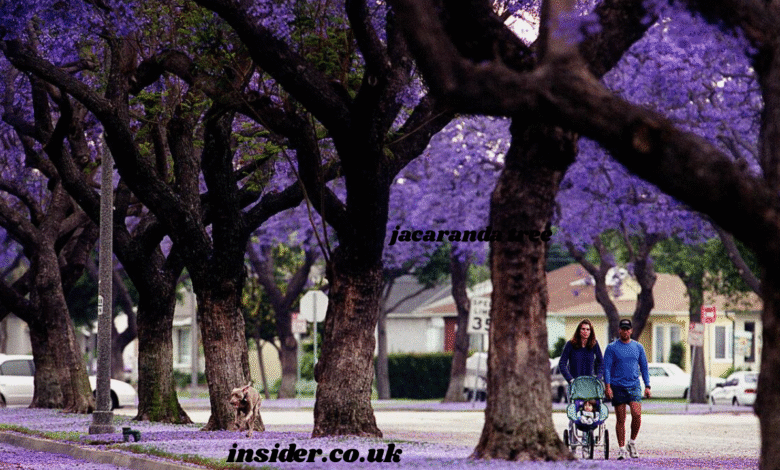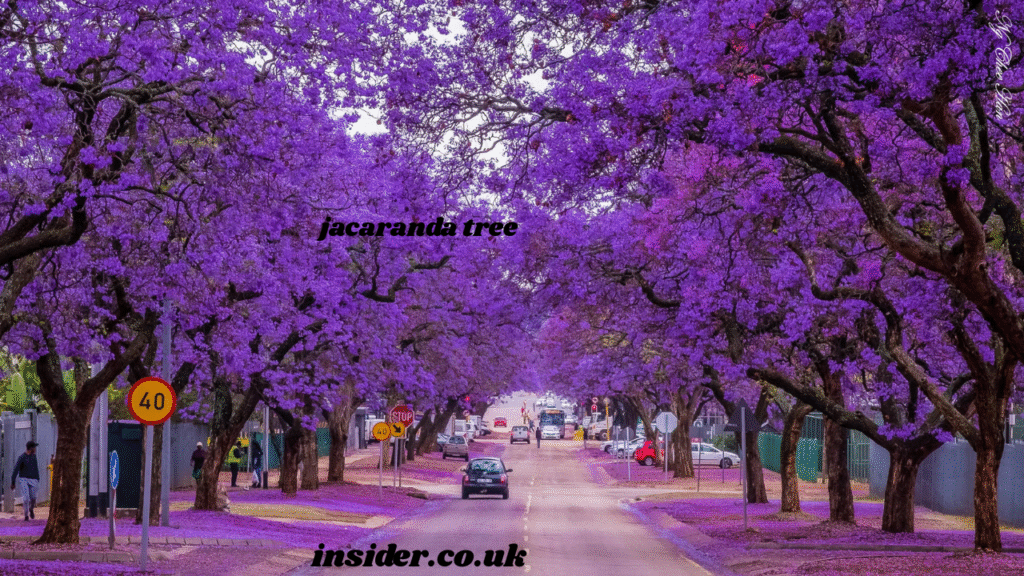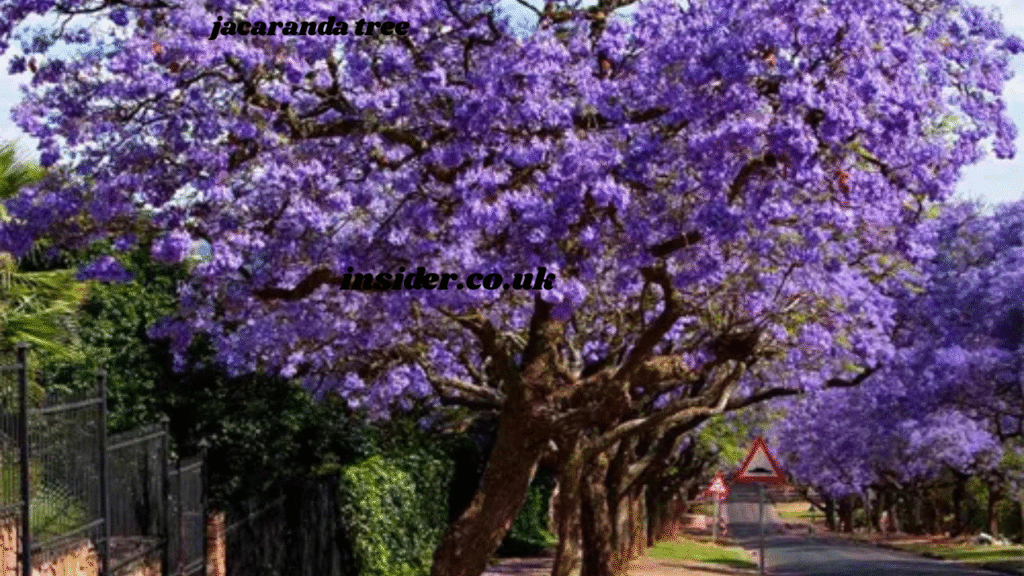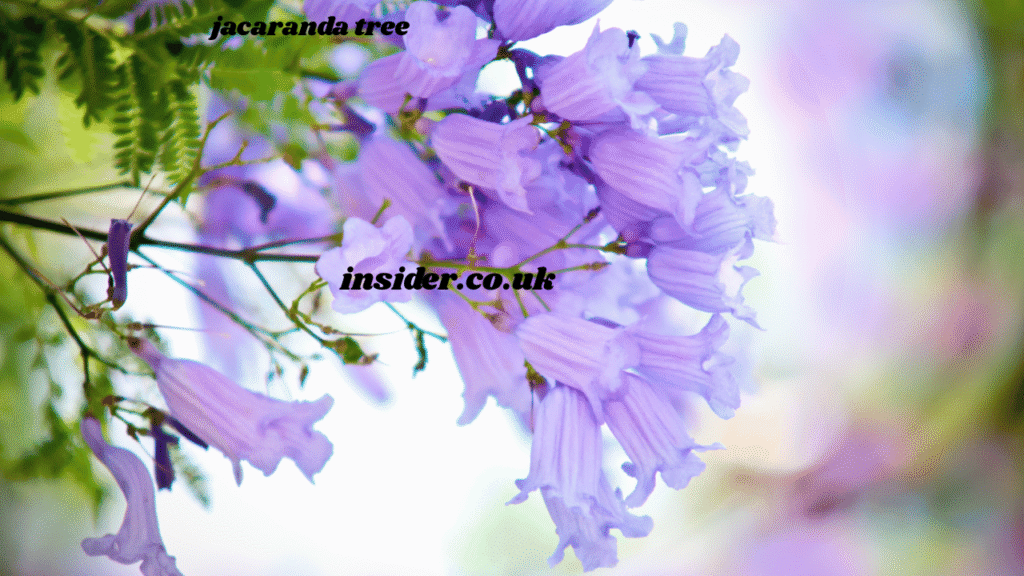
Jacaranda Tree, ??, A Mesmerizing Symbol of Color and Grace
The jacaranda tree is more than just a plant; it is a symbol of vibrant color, subtle elegance, and nature’s artistic brush in urban and suburban landscapes. Known for its striking lavender-blue blooms, the jacaranda tree transforms streets, parks, and gardens into a breathtaking sea of purple, drawing nature lovers, photographers, and travelers alike. This article explores the jacaranda tree, ??, focusing on its origins, botanical features, cultural symbolism, and practical care.
Origins and Global Spread of the Jacaranda Tree

The jacaranda tree is native to South America, particularly Brazil, Paraguay, and Argentina. Its scientific name, Jacaranda mimosifolia, reflects its resemblance to the leaves of the mimosa plant. Over the years, it has been introduced to various parts of the world, including Africa, Australia, the southern United States, and parts of Asia, where it has adapted well to warm, subtropical, and tropical climates.
Cities like Pretoria in South Africa and Los Angeles in the United States have adopted the jacaranda tree as a beloved feature of their urban greenery. During blooming seasons, these cities transform under canopies of purple blossoms, creating a mesmerizing, soft carpet of petals on sidewalks and roads, attracting tourists and photographers worldwide.
Botanical Characteristics of the Jacaranda Tree

The jacaranda tree is a deciduous tree that can grow between 25 to 50 feet tall, with a wide canopy that provides dappled shade. It has delicate, fern-like, bipinnate leaves that add to its ornamental value even when it is not in bloom. The tree’s most distinguishing feature is its trumpet-shaped, lavender-blue flowers that bloom in clusters, often appearing before the leaves fully emerge, creating a striking visual impact.
After flowering, the jacaranda tree produces woody, disc-shaped seed pods that can remain on the tree throughout the year. Its bark is thin and grayish-brown, and its branches often have a graceful, arching appearance, adding to its aesthetic charm in any landscape.
The Cultural Significance of the Jacaranda Tree

Beyond its visual beauty, the jacaranda tree holds significant cultural symbolism in various regions. In parts of South Africa, the jacaranda tree is associated with exam season, and it is said that if a flower from the tree falls on your head, it will bring good luck for your exams.
In Australia, particularly in cities like Sydney and Brisbane, the jacaranda tree symbolizes the arrival of spring and the start of the warmer months. The streets and university campuses covered in purple blossoms evoke a sense of renewal and hope. Similarly, in parts of the United States, the jacaranda tree has become an unofficial symbol of early summer, with communities organizing festivals and photography walks during the blooming season.
The Best Locations to See the Jacaranda Tree in Bloom
Experiencing the jacaranda tree in full bloom is a unique experience that draws travelers and nature enthusiasts to various parts of the world. In Pretoria, often referred to as the “Jacaranda City,” the blooming period transforms the entire city into a purple wonderland.
In Los Angeles, streets lined with jacaranda tree canopies provide a picturesque backdrop for daily life, especially in neighborhoods like Pasadena and Santa Monica. Brisbane and Sydney in Australia are also renowned for their jacaranda-lined streets, particularly in October and November, when the trees are at their peak bloom.
These locations have embraced the jacaranda tree as part of their cultural and environmental identity, showcasing the global appreciation of this remarkable tree.
Planting and Caring for a Jacaranda Tree
The jacaranda tree is a relatively low-maintenance tree if planted in the right environment. It thrives best in full sunlight and well-drained soil, and it prefers warm climates with minimal frost exposure. If you are considering planting a jacaranda tree, it is essential to choose a spacious location, as its roots can spread widely, and its canopy needs room to expand.
Watering should be moderate, allowing the soil to dry between watering sessions, particularly during its establishment phase. The jacaranda tree is moderately drought-tolerant once established but benefits from occasional deep watering during prolonged dry spells.
Pruning should be done carefully to maintain its shape and remove any weak or crossing branches. However, excessive pruning can impact flowering and should be avoided unless necessary for structural balance or safety.
Challenges Associated with the Jacaranda Tree
While the jacaranda tree is admired for its beauty, it also comes with some challenges that potential growers and city planners must consider. The falling blossoms, while beautiful, can create a slippery surface on sidewalks and roads, requiring regular cleaning in high-traffic areas.
Additionally, the tree’s roots can sometimes interfere with sidewalks, plumbing, and nearby structures if not managed properly. Despite these challenges, the aesthetic value and shade provided by the jacaranda tree often outweigh the drawbacks for many homeowners and municipalities.
Ecological Benefits of the Jacaranda Tree
Apart from its ornamental value, the jacaranda tree contributes positively to urban and suburban environments. It provides habitat and food sources for various bird species and pollinators, supporting local biodiversity. The tree’s wide canopy offers shade, reducing heat in urban areas, and helps improve air quality by absorbing carbon dioxide and releasing oxygen.
The jacaranda tree can also enhance the overall aesthetic of cityscapes, encouraging outdoor activities and providing residents with a sense of connection to nature amidst urban development.
The Jacaranda Tree in Art and Literature
The jacaranda tree has been a subject of art, literature, and photography worldwide. Its striking blossoms have inspired poets, painters, and photographers, symbolizing themes of beauty, impermanence, and seasonal change.
In literature, the jacaranda tree often represents transitions, with its blossoms marking the shift from one season to another, and in many cultural narratives, it is seen as a symbol of hope and renewal. Artists frequently use the purple blooms of the jacaranda tree to create vibrant, emotion-evoking compositions that reflect the harmony between nature and urban life.
Conclusion: Celebrating the Jacaranda Tree
The jacaranda tree, ??, stands as a testament to nature’s artistry, transforming cities and landscapes into vibrant canvases of purple hues each year. Its cultural, ecological, and aesthetic significance makes it one of the most admired trees globally, capturing the hearts of those who witness its bloom.
Whether you are a homeowner seeking to add a splash of seasonal color to your garden, a city planner aiming to enhance urban greenery, or a traveler looking to experience the charm of blooming jacaranda tree streets, this tree offers beauty and connection to nature that few others can match.
The jacaranda tree is more than just a flowering tree; it is a celebration of life, a reminder of seasonal cycles, and a symbol of elegance in nature’s design, inviting everyone to pause and appreciate the fleeting moments of beauty it provides each year.



